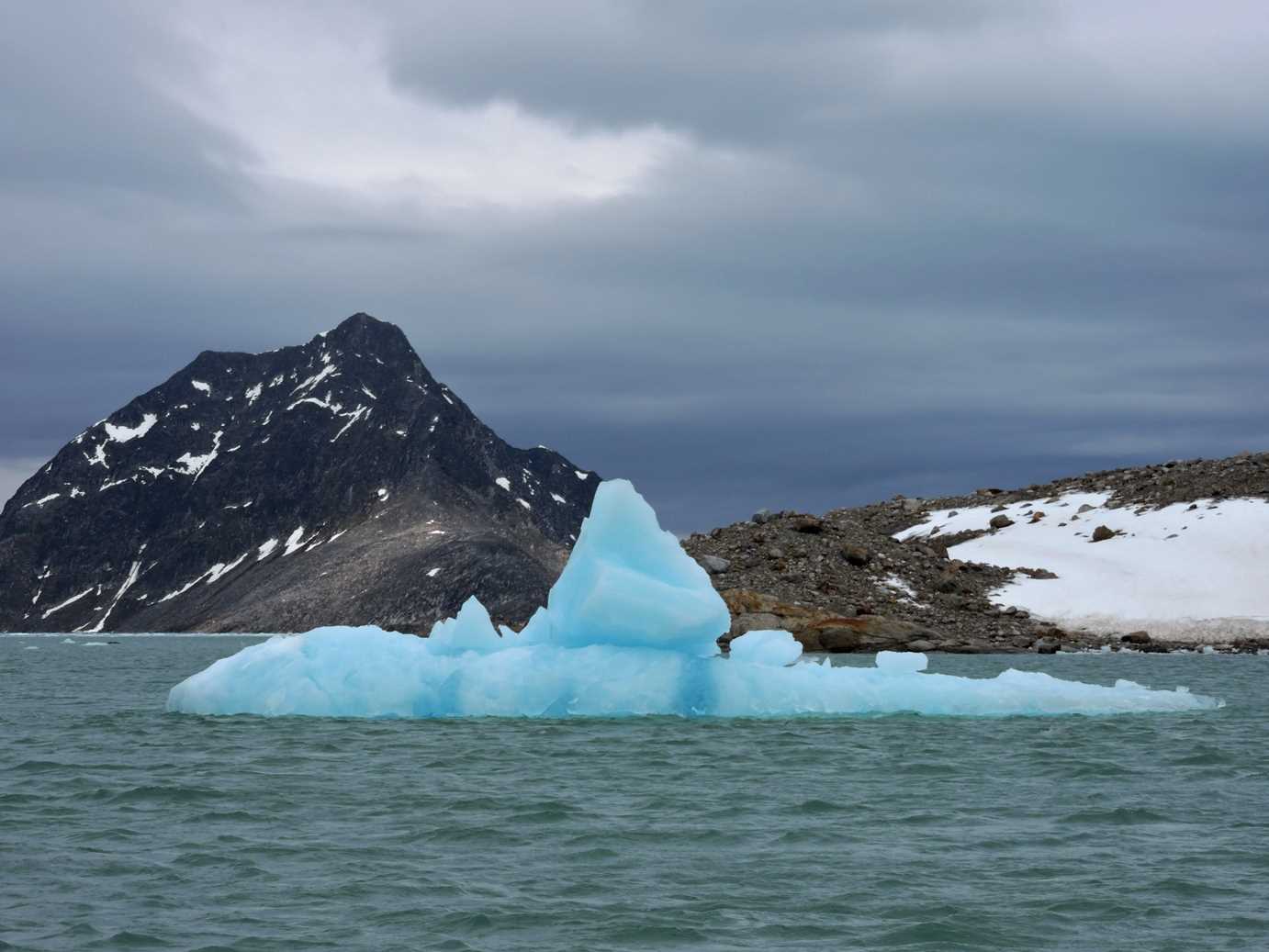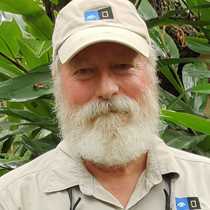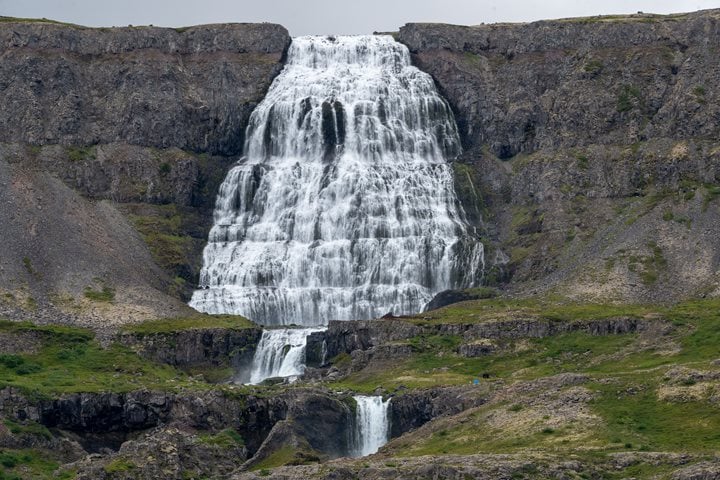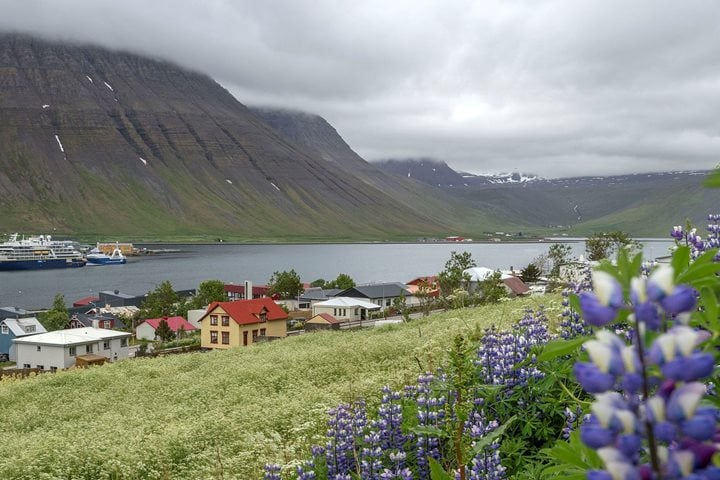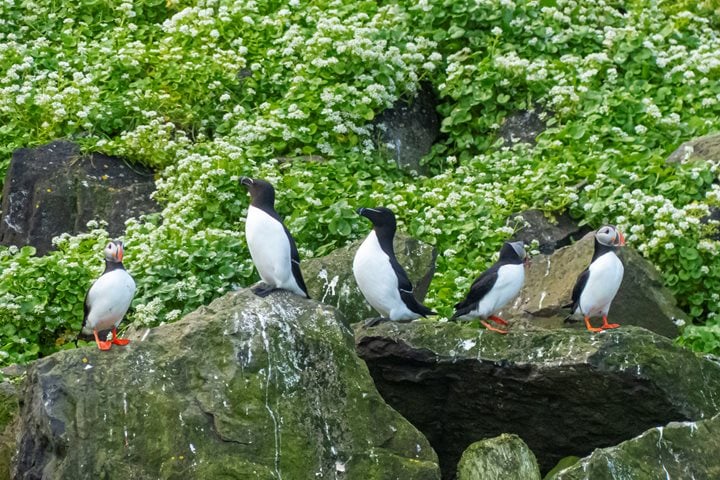We spent the entire day around the northwestern corner of Spitsbergen Island, the largest island in the Svalbard Archipelago. Amazingly, we moved around between 79 and 80 degrees North Latitudes all day as we explored this rugged region of the island. The morning found us in Fuglefjord, where we enjoyed the ice-filled waters near the face of a big glacier called Svitjodbreen. This “river of ice” was very active and produced continuous booms and echoing sounds like cracks of thunder as the huge ice sheet moved down the valley and calved off chunks of ice at the face. Most of the falling ice was somewhat crumbly and produced mostly brash ice, growlers, and bergy bits, as opposed to big icebergs (by definition, icebergs must extend at least five meters or about 16 feet above the water’s surface), but it was fun to see all the activity and feel the small swells produced by the ice as it fell into the seawater.
People had the choice to take part in both Zodiac cruises and kayak operations. Many of our guests did both, although some just satisfied themselves with the Zodiacs. With the Zodiacs, we cruised right in among the floating ice debris, where it was fun to turn off the engines occasionally and sit quietly and listen to the constant crackling and popping sounds made by the brash ice as it melted and gave up its pressurized air bubbles trapped within the ice. Several bright blue bergy bits were sighted, which produced lots of interest and photographs.
From the Zodiacs, many black guillemots, arctic terns, kittiwakes, and several arctic skuas, and glaucous gulls were seen hanging around. Every time a significant ice fall took place, numerous arctic terns and kittiwakes immediately flew over to the site of the drop in order to search for and dive after little fish and/or amphipods that got forced up to the surface by the ice fall induced upwells. In addition, a couple walruses were sighted (presumably a mother and her calf), as well as at least one ringed seal swimming among the brash ice. The kayakers enjoyed some quiet time to do their own things and explore in quiet solitude. During lunch, we moved the ship a short distance to Amsterdamøya (Amsterdam Island), where we planned to go ashore to hike and view some interesting ruins from the Dutch whaling industry of the 17th and 18th centuries. As we approached our anchorage, however, a polar bear was spotted walking along the beach near the landing site. This changed everything. We watched the bear for quite some time as it continued along the beach and headed toward some walruses at the far end of the shoreline. The bear appeared quite thin…meaning it was a hungry, dangerous bear…and we imagined there might be some sort of serious interaction between the bear and the walruses. As it turned out, there wasn’t. The bear turned away before he reached the walruses and disappeared around the corner of the island.
We opted then to go elsewhere and decided to explore a landing at Bjørnfjord, located at the head of Smeerenburgfjord. By mid-afternoon (the timing of which means little when one enjoys 24 hours of daylight), we had reached our anchorage and took people ashore at a small beach to enjoy hiking and exploring among some truly ancient geology. Everyone was impressed by the spectacular rock formations at the landing site and the impressive coverage of the higher rocks by many species of lichens. The walking was a little tricky in places over the larger, loose rocks within the moraine deposit, but the geology, flora, and views were well worth it.
One of the highlights of the hike was finding an ancient fox trap (Figure B). This very simple, but effective deadfall trap consisted of a roughly square-shaped, wooden slat structure with several heavy rocks set atop it. A two piece prong propped up one end of the trap with a bait tied to it. When a fox pulled on the bait, the prop separated and the heavy structure would drop on the hapless fox, killing it quickly. This particular trap had been abandoned long ago and was partly overgrown by moss and lichens. However, the wooden slats were still intact since there is little in the way of wood destroying microbes and fungi (and certainly no termites!) in this cold, dry habitat. We could clearly see the old-styled forged, square-headed nails holding the wooden pieces together. From here, we sailed out through Sørgattet Strait and began our long voyage westward toward Greenland.

